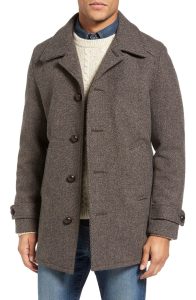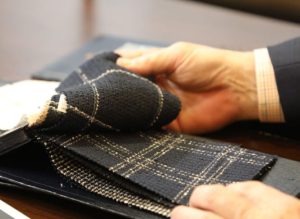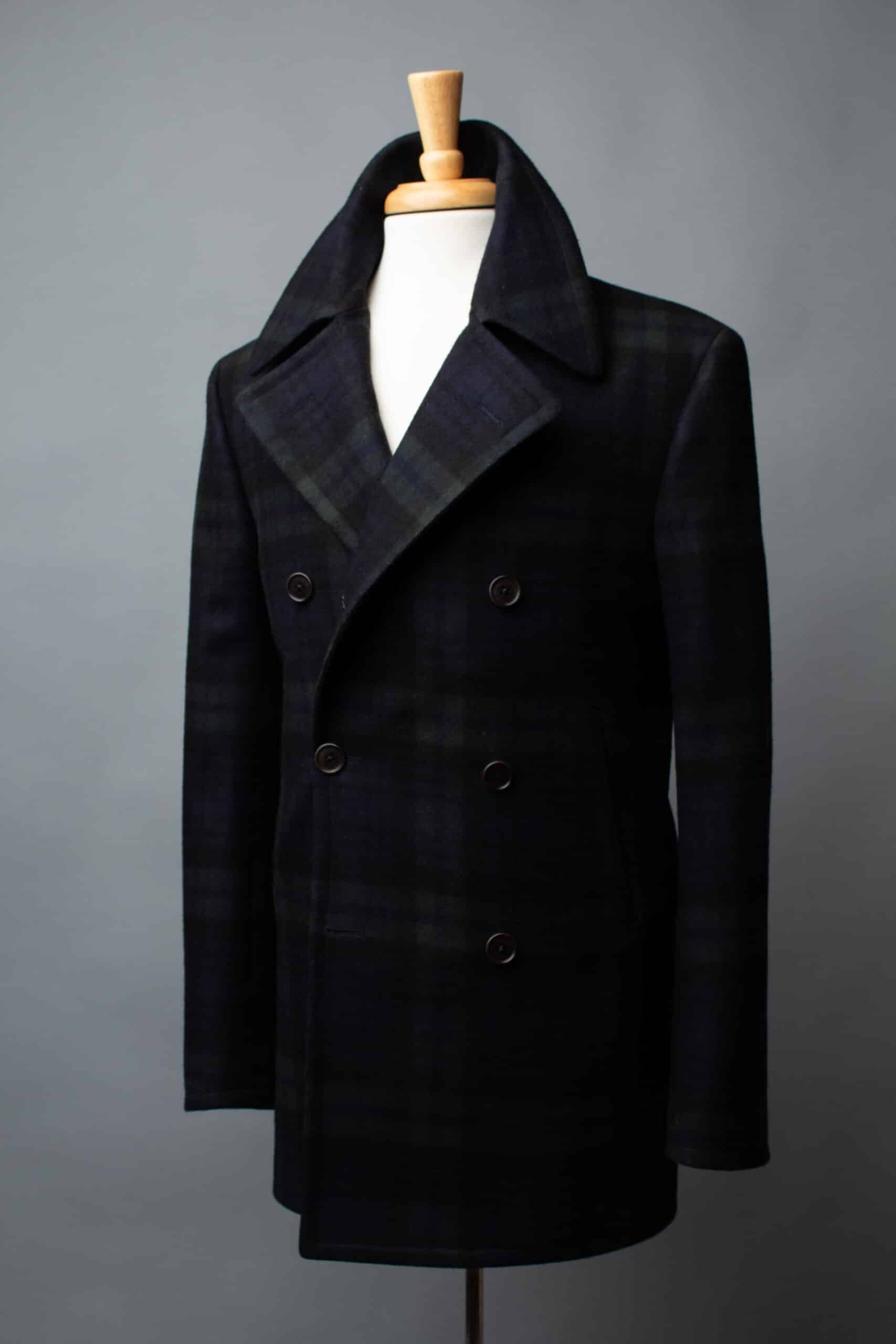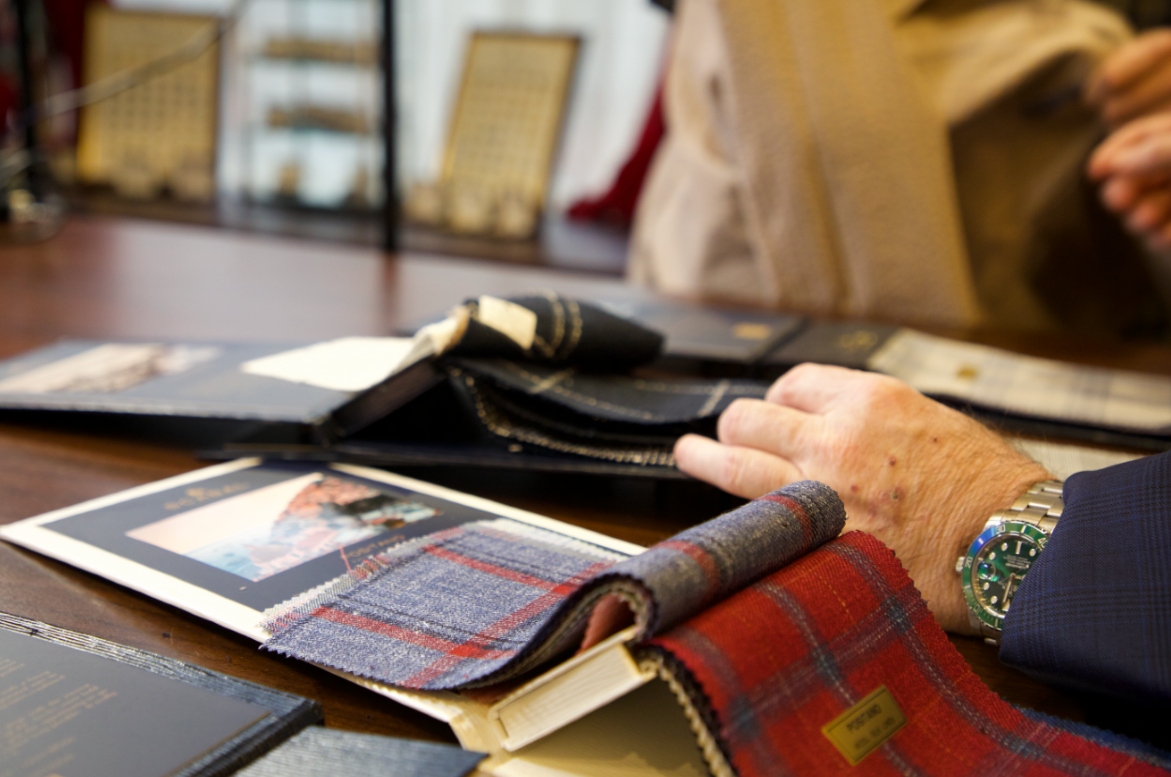The world has been a crazy place for the past few years, and not just due to a pandemic. The weather itself has been changing – here in Philadelphia and New York City, summers have been hotter and lasting longer than they have in years past. Case in point – this blog post was published on October 14th. The high temperature today in Philly? Seventy-nine degrees. With that in mind, it feels a little strange to write about cold weather gear, but alas, here we are. The weather will break at some point, so we’ve organized a brief guide to men’s overcoats to help you plan your next wardrobe move.
Winter Coat Terminology
 As is often the case in clothing retail, there’s relatively little standardization in terms of how we refer to specific garments. You’ve probably come across terms like overcoat, car coat, pea coat, great coat, topcoat, and others. Any easy way to think about them from a 30,000 foot view is to compare them to car manufacturing – there are makes, and there are models. Four our purposes, we break it down into two “makes”: overcoats and car coats.
As is often the case in clothing retail, there’s relatively little standardization in terms of how we refer to specific garments. You’ve probably come across terms like overcoat, car coat, pea coat, great coat, topcoat, and others. Any easy way to think about them from a 30,000 foot view is to compare them to car manufacturing – there are makes, and there are models. Four our purposes, we break it down into two “makes”: overcoats and car coats.
Make 1: Overcoats
Overcoats are meant to be worn, ahem, over a sport jacket or suit. Depending on their overall fit and length, they may have different names. Topcoats tend to be a little slimmer and shorter, hitting above the knee. Greatcoats, on the other hand, take a cue on military officers’ coats of days past. They tend to have a more generous fit and come in a full length, sometimes hitting between the calf and the ankle. This category has a few other styles to speak of as well:
- Polo coat: A double-breasted overcoat (usually with a 6×2 button stance) with a belt, this is a classic British look that’s traditionally appropriate with suits. Colors are usually navy, dark grey, and black. They’re very similar to trench coats, though we tend to view trench coats as more winter-to-spring items that are good for rainy days.
- Chesterfield: The Chesterfield is another classic British model. A single-breasted overcoat with a notch lapel, it sports a contrasting collar, typically faced with velvet. They may or may not take a button fly.
- Balmacaan: A loose, single-breasted, full-cut overcoat with raglan sleeves and (often) sleeve straps near the cuff. They may or may not have a fly front.This is a very casual overcoat that works extremely well with jeans and sweaters – you may want to consider a bold plaid or herringbone if you tend to dress casually.
Make 2: Car Coats
On balance, car coats are shorter than overcoats, often just covering the seat and no further. This shorter length is why they’re called “car coats” – you can keep them on while driving and not have coat material near your legs while operating the pedals. They’re more casual, and shouldn’t necessarily be paired with a sport jacket. In this category, some popular styles are:
- Pea coats: Everyone knows about the pea coat. Typically a 6×3 or 8×4 double-breasted coat with an Ulster collar and center vent, these coats will keep you warm and stylish with custom jeans and a sweater.
- Pizza Coat: This is a model that we make for many of our clients. It’s a simple, 4-button single-breasted coat with patch pockets and a bal collar. We call it a “pizza coat” because it’s perfect to throw on to head out for a casual meal, like pizza.
Custom Overcoat Fabrics – What To Look For

As for fabrics, remember that you’re talking about cold weather clothes, here. You want heavy wool, typically north of eleven ounces per yard, to keep you warm when the temperature drops. Dressier overcoats work best with solid colors – navy, charcoal, chocolate brown, and camel. Luxury fabrications like cashmere zibeline or alpaca are perfect for guys who want a sumptuous handle. Vicuña overcoats will yield. the most special, heirloom-quality overcoats that money can buy.
Car coats (and balmacaan overcoats) are more casual and therefore have a little more leeway in terms of design. Oversized herringbones and exploded houndstooth designs make for bold statement pieces, while plaids allow you to play with color and proportion from outfit to outfit. Heavy lambswools and woollen flannels make into beautiful car coats, but if you want something more luxurious, a little cashmere never hurt anyone.
If you’re a skilled dresser (or heed the guidance of an image consultant), you can mix the “high/low” nature of dressy overcoats with more casual outfits, and vice-versa.
A Quick Note On Height & Coat Length
When you dress stylishly, that means, amongst other things, that you complement your body’s natural proportions well. In an overcoat discussion, remember this rule of thumb: tall men should gravitate toward longer coat lengths, and short men should gravitate toward shorter coat lengths. Personal preference and utility are of course at play here – too-short coats don’t keep you as warm as longer ones – but a short guy in a long coat is going to look like a kid who’s borrowing his dad’s clothes. Conversely, a tall man in a short coat will simply accentuate his height in a way that isn’t necessarily flattering.
How To Pick The Best Outerwear For Your Needs
To make sure you’re investing in the right coat for you, ask yourself a few questions. How do I dress? Do I veer more formal, or more casual? What’s currently in my closet? Do I like what’s in my closet, and does it fit? What’s my lifestyle like?
Ready to get started? We’re here to help. Give us a call at 215-310-0219 or email info@henrydavidsen.com to get started.


